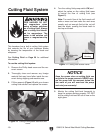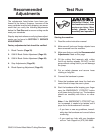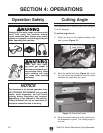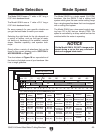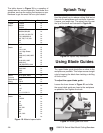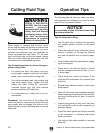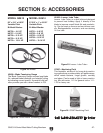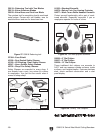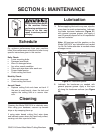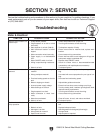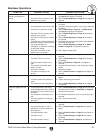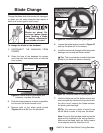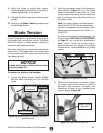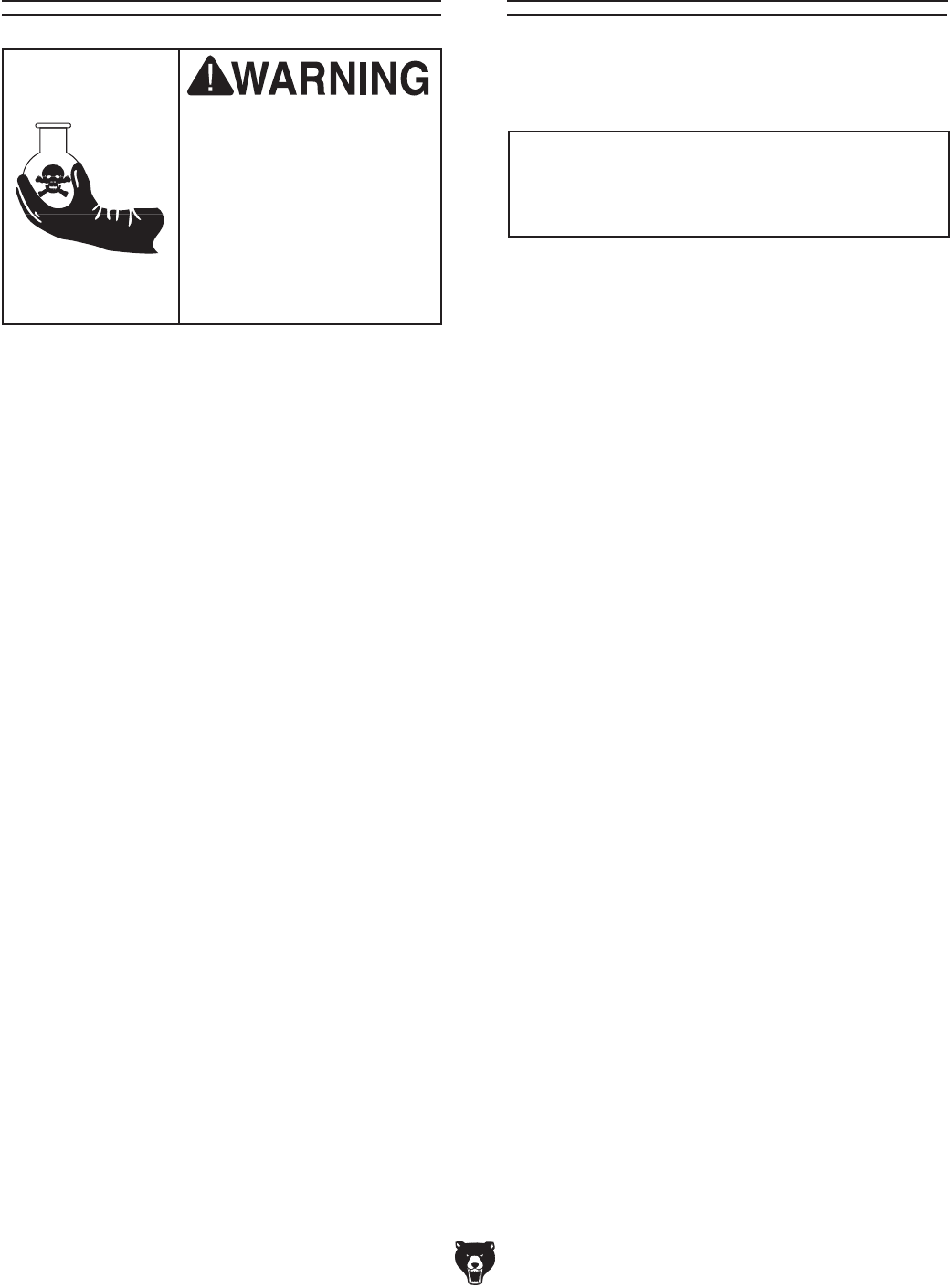
-26-
G0613/14 Swivel Mast Metal Cutting Bandsaw
The following tips will help you safely and effec-
tively operate your bandsaw and get the maxi
-
mum life out of your saw blades.
Tips for horizontal cutting:
• Use the work stop to quickly and accurately
cut multiple pieces of stock to the same
length.
• Clamp the material firmly in the vise jaws to
ensure a straight cut through the material
and use the positive lock to speed produc
-
tion.
• Let the blade reach full speed before engag-
ing the workpiece.
• Never start a cut with the blade in contact
with the workpiece and do not start a cut on
a sharp edge
.
• Chips should be curled and silvery. If the
chips are thin and powder like, increase your
feed rate.
• Burned chips indicate a need to reduce your
blade speed.
• Wait until the blade has completely stopped
before removing the workpiece from the vise,
and avoid touching the cut end—it could be
very hot!
• Support long pieces so they won't fall when
cut, and flag the ends to alert passers-by of
potential danger.
• Adjust the blade guides as close as possible
to the workpiece to minimize side-to-side
blade movement.
• Use cutting fluid when possible to increase
blade life.
Operation Tips
While simple in concept and function, many
issues must be taken into account to find and use
the correct cutting fluid. For example, you must
consider the workpiece type and hardness, its
shape, the blade feed rate, blade TPI, the tooth
type, and blade type, and cutting speed. Always
follow all product warnings and contact the fluid
manufacturer for unanswered questions.
Use the selections below to choose the appro
-
priate cutting fluids:
• For cutting low alloy, low carbon, and gen-
eral-purpose category metals with a
bi-metal
blade—use a water soluble cutting fluid.
• For cutting stainless steels, high carbon, and
high alloy metals, brass, copper and mild
steels—use "Neat Cutting Oil" (commonly
undiluted mineral oils) that have extreme
pressure additives (EP additives)
.
• For cutting cast iron, cutting fluid is not rec-
ommended.
Remember
: Too much flow at the cutting fluid
nozzle will make a mess and can make the work
area unsafe; and not enough fluid at the cut will
heat the blade, causing the blade teeth to load up
and break.
Cutting Fluid Tips
POISON & BIOLOGICAL
HAZARD! Use the proper
personal protection
equipment when handling
cutting fluid and dispose
by fol
lowing federal, state,
and fluid
manufacturer
requirements to properly
dispose of cutting fluid.
NOTICE
Loosen blade tension at the end of each day
to prolong blade life.



